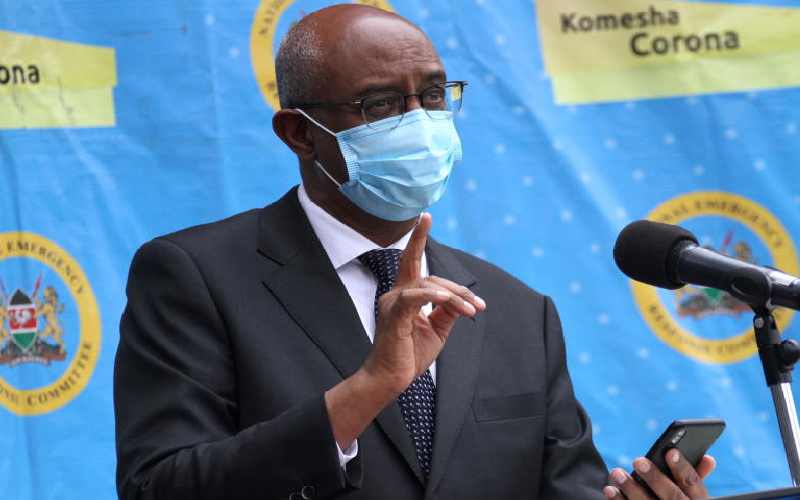
Health CAS Rashid Aman
The decline in the number of reported coronavirus cases in Kenya could be as a result of reduced contact tracing and less mass testing.
From three-digit new cases, the numbers have dropped to double-digit yet the sample size has remained relatively high.
As health officials seek to explain the sudden drop in the numbers, the government now relies largely on hospitals to get the daily Covid-19 numbers.
On Sunday, the Health ministry reported 83 cases from a sample size of 3,093 while on Saturday, the number was 136 from 3,707 samples. Yesterday, 102 more people tested positive from a sample size of 2,668.
SEE ALSO: Bodies of Covid-19 victims not infectious, says Ministry of Health
The Standard has learnt that contact tracing is now done only for close family members and this role has been left to the sub-counties. In the end, large portions of the population who have come into contact with confirmed cases and might be positive do not get tested, and may never get tested unless they fall sick or do it voluntarily. These individuals might end up unknowingly infecting others.
The Standard placed a call to the 719 emergency response centre manned by the ministry to inquire about contact tracing, but we were later asked to contact Nairobi County through 0800721316, as the exercise is now under counties.
According to AMREF Group CEO Githinji Gitahi, the positivity curve has taken a downturn due to lack of contact tracing resources in some counties.
According to Dr Gitahi, the total recorded cases in Kenya are largely from the environs of Nairobi and Mombasa that were among the first counties to record Covid-19 cases in March.
Daily updates
SEE ALSO: Covid-19: Kenya records 136 new cases in last 24 hours
The past week has seen the number of those testing positive decline, according to the daily updates given by the Ministry of Health.
At least 597 people have died of the disease, with more than 35,000 infected. “The Kenya testing rate now is about 1 per cent. Testing has not been adequate. And it has been said before and the government has acknowledged that testing has been sub-optimum for various reasons,” Gitahi said while appearing on a local TV on Sunday.
He added: “The positivity rate could also be affected by the lack of resources in different counties needed for the contact tracing.” Gitahi said although the government was focusing on home-based care, it was likely that the efforts taken for contact tracing were less as most of the counties do not have the necessary resources.
“The question remains, how prepared are these counties? Do they have what is needed?” he posed. Gitahi’s sentiments come barely a week after the World Health Organisation (WHO) released a statement indicating that the drop of coronavirus cases in Kenya was due to low testing and contract tracing.
The agency said there had been a decline in the number of laboratory tests being conducted. WHO, however, cautioned against an interpretation that the decline meant that the country was flattening the curve.
SEE ALSO: High expectations for sports restart next week
Government strategy
A September 4 situation report from the Health ministry on Covid-19 shows the testing strategy of the government has shifted to symptomatic cases, hospital cases, prisons, and healthcare workers. The report attributes the reduced numbers to this.
“Inability to track all contacts of cases and due to home-based care, not all cases are captured since many patients now opt to stay at home and may not be missed cases,” the report adds.
The report says there are inadequate resources at sub-county level, where the contact tracing and surveillance are supposed to be done. From the report, the positivity rate now stands at 7.6 per cent from the 456,243 tests and 34,884 confirmed cases.
Credit: Source link